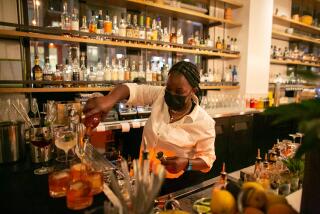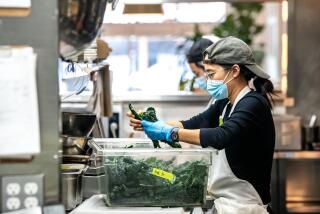A timeline tracing an impossible year in L.A. dining
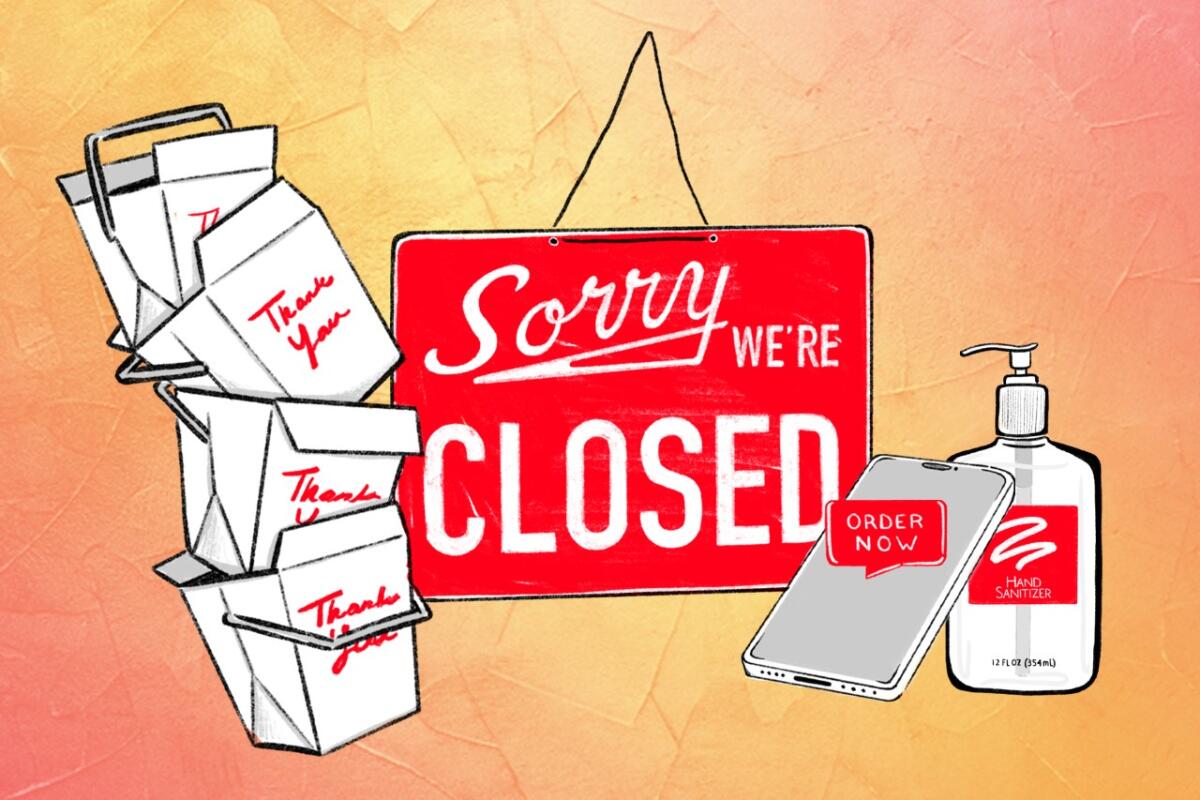
- Share via
Beginning March 14, restaurants in Los Angeles County opened their dining rooms (at partial capacity) after being barred from serving indoors for most of the past 12 months. The reopening came one day shy of the anniversary date — March 15, 2020 — when Los Angeles Mayor Eric Garcetti ordered restaurants to discontinue dine-in service to help slow the spread of the novel coronavirus.
What happened in between those X-marks on the calendar is … a lot. It’s hard for our minds to hold everything that’s happened in the last year. It’s even harder to fathom the layers of tribulation that restaurant owners and their staffs have been through, starting with the painful time-loop pattern of shutdowns, punctuated by whiplash decisions from various government agencies that left heads spinning.
As it became clear that the pandemic could stretch out indefinitely and that vaccines wouldn’t become available before the year’s end, questions with no static answers emerged: What are the best ways to protect restaurant workers? How do customers best support restaurants when the government fails to provide a financial safety net? Is ordering takeout enough? Do we buoy restaurants through merchandise, or online fundraising campaigns, or gift certificates? Is it enough to donate to restaurants partnering with nonprofits that are helping to feed medical workers?
The amplification of social-justice issues that arose during the COVID-19 crisis bled into every aspect of food culture, including the question of what a restaurant is, what’s broken about the model and how it might be corrected.
There is no way in a finite space to recount every heartbreaking closure, or trace every disruptive ripple through the food industry, or glean complete understanding of recent events. Still, an overview timeline of the past year gives context to what our dining culture has been through. Reviewing the last year might, if nothing more, help us remember the meaning that restaurants bring to our lives.
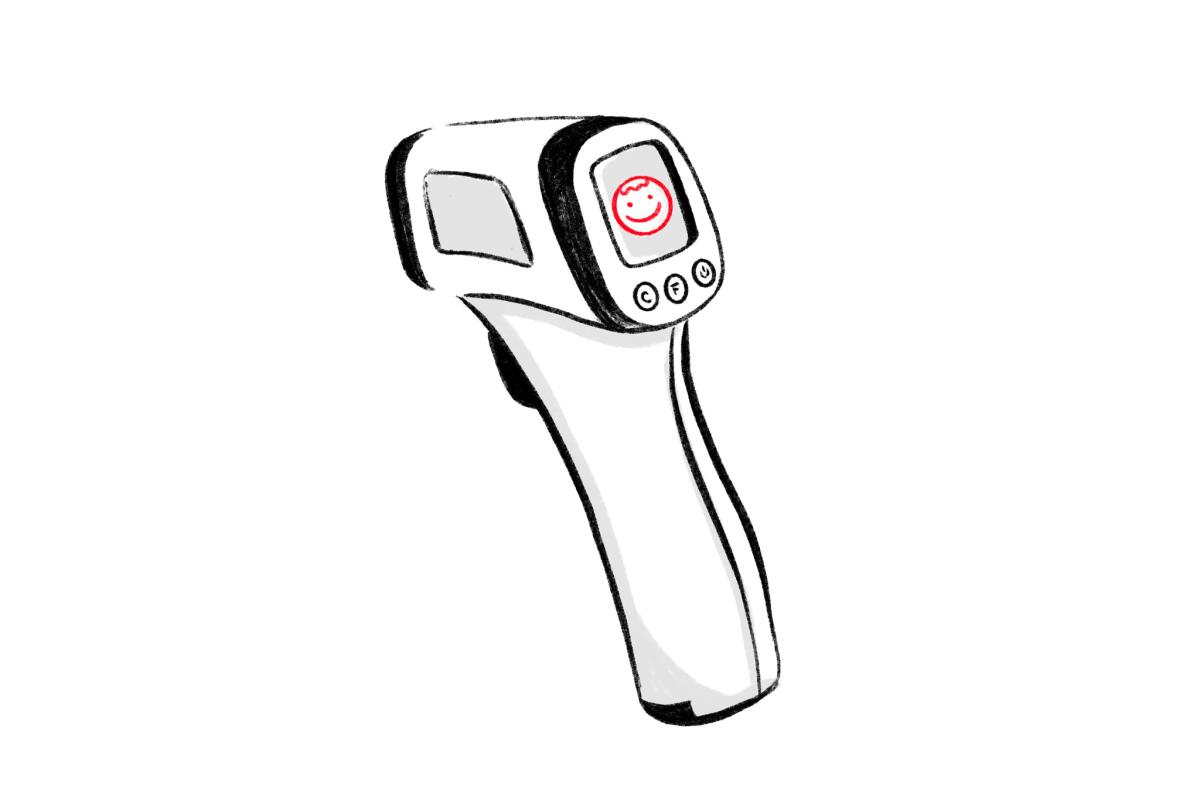
January/February 2020
— Health officials report the first novel coronavirus case in the United States (in Washington State) on Jan. 20. By Jan. 26, Los Angeles and Orange counties record their first cases brought back by travelers who have recently been in Wuhan, China.
— Almost immediately, fears around the outbreak cause steep, tangible declines in the restaurant business in established Asian communities such as Chinatown and the San Gabriel Valley.
— The drop in business comes amid rising incidents of anti-Asian bias and misinformation. Times columnist Frank Shyong writes on Feb. 3: “People are openly wondering if it’s safe to eat at Chinese restaurants, as if a virus could be transmitted through flavors. Chinese people and anyone who could be mistaken for Chinese are being treated like potential carriers of disease.” Anti-Asian hate crimes spike will spike alarmingly over the course of the year.
— Sichuan Impression is among the first restaurants to start taking customers’ temperatures as they sit down to dine, a practice that will become standard during the pandemic.
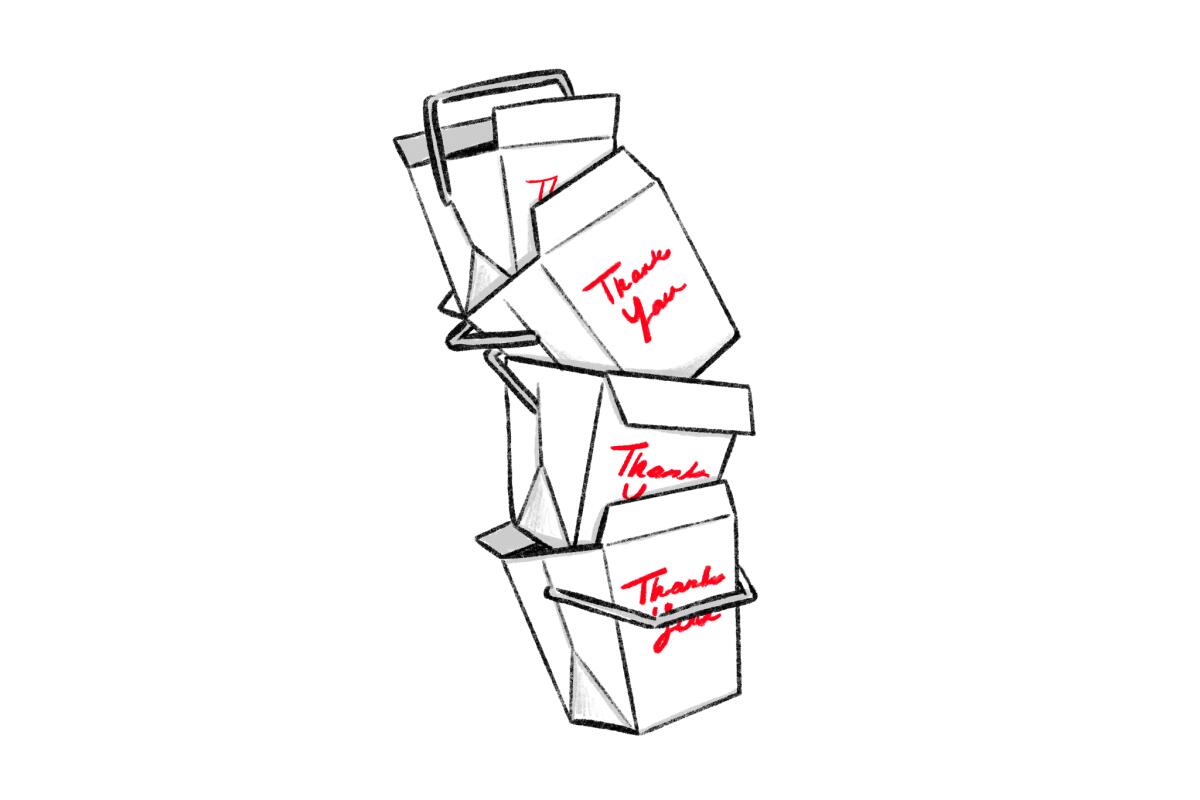
March 2020
— Concerns around COVID-19 accelerate and restaurants across Los Angeles begin to experience reservation cancellations and emptying dining rooms. Some chefs preemptively devise takeout alternatives. At a March 12 press conference, Mayor Garcetti suggests that worried diners consider ordering takeout to support restaurants.
— On March 15, Gov. Gavin Newson says he believes restaurants should remain open as long as customers practice “deep social distancing” when dining out, while urging (without mandating) that bars, nightclubs, wineries and breweries across the state shut down in the name of public safety.
Later that night, however, Mayor Garcetti orders Los Angeles bars to close and forces restaurants to cease dine-in service, effective at midnight and (initially) through the end of the month. Restaurants are allowed to operate for pickup and delivery. Most independent restaurants typically operate on razor-thin margins and chefs across the city denounce the decision, particularly given the lack of any discernible financial support from the government.

— A blindsided industry scrambles, contending with what feel like impossible circumstances for survival. Some restaurants pivot immediately to takeout; other owners make painful decisions to temporarily close, furloughing their staffs. Genevieve Gergis, co-owner of Bavel and Bestia, sums up the moment: “A lot of restaurants aren’t financially prepared for this,” she says. “We’re prepared to work harder, we’re prepared to get through hard times, but we’re not prepared for nothing.”
— The week of March 15, local and county governments across California begin issuing shelter-in-place orders. Newsom declares a statewide stay-at-home order on March 19. The same day, Garcetti places the city under a “Safer at Home” ordinance and extends the ban on indoor dining through April 19.
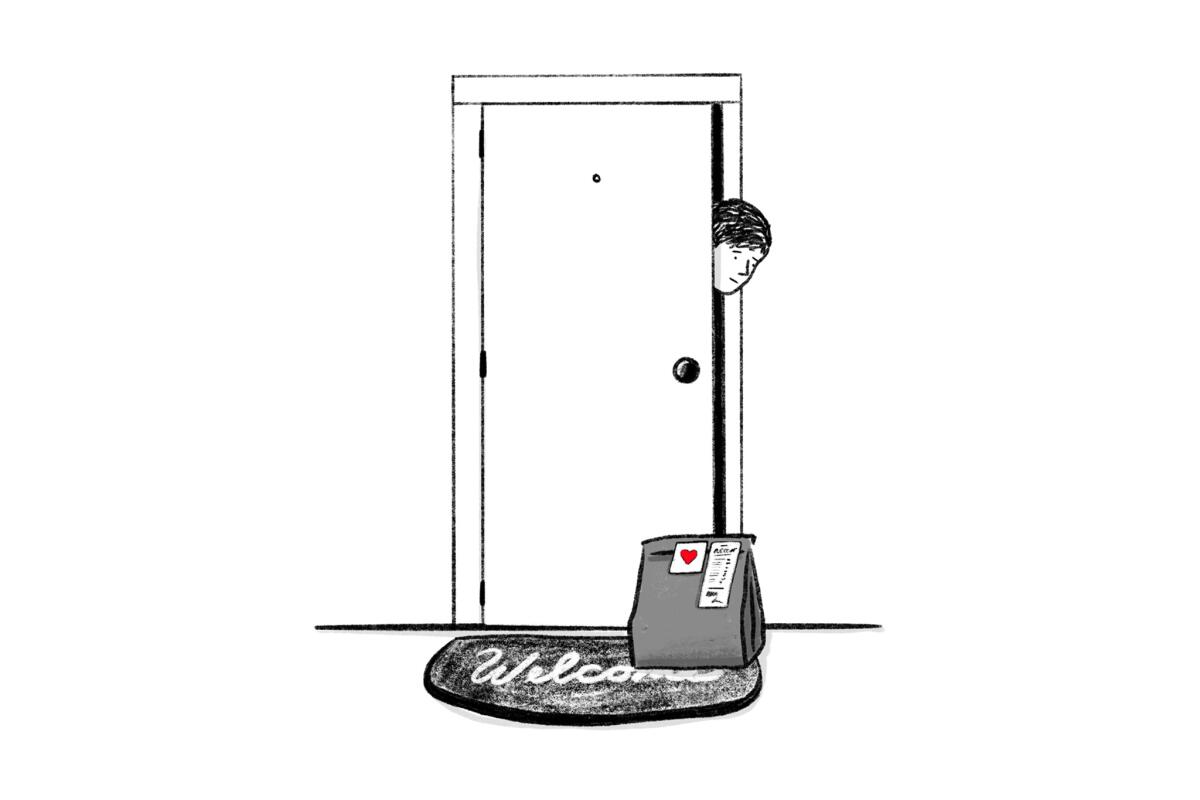
— Initial confusion makes it unclear if restaurants can function as makeshift markets to help sustain themselves; at first, businesses like Bacari in Playa del Rey are shut down by the Los Angeles County Department of Public Health for allowing customers to browse for items inside. But on March 31, a department representative tells the Times, “Public Health is allowing restaurants to offer grocery items as part of their menu for takeout, pickup and delivery.”
— Mayor Garcetti orders a moratorium on evictions of commercial tenants unable to pay rent due to COVID-related circumstances. The state eventually enacts its own eviction moratorium, which is extended through June 30, 2021.
— On March 19, California’s Department of Alcoholic Beverage Control temporarily eases regulations, allowing restaurants, bars and wine and liquor stores to sell via carryout and delivery.
The World Health Organization announced the coronavirus outbreak had become a pandemic on March 11, 2020. Since then, the virus has seemingly touched all aspects of life in Southern California and beyond. The Times looks back on a full year of life in a pandemic.
— Food-related businesses rush to contend with the new reality. Farmers markets implement strict distancing practices. Local produce wholesalers shoulder a 90% drop in sales in the first weeks of the shutdown. Some Instacart workers strike to demand adequate protective gear and hazard pay, prompting an ethical dilemma: Should you pay someone to shop for your groceries during a pandemic?
— The plight of unemployed restaurant workers (including street vendors, whose permits are revoked due to COVID-19) becomes immediately apparent and critical, particularly for undocumented workers who hold an estimated 10% to 40% of restaurant jobs in Los Angeles. Nonprofit organizations such as the Restaurant Workers’ Community Foundation and the One Fair Wage Campaign start relief funds and offer resources.
— The week of the shutdown, Nancy Silverton announces she has partnered with LEE Initiative (a nonprofit started by Lexington, Ky.-based chef Edward Lee) and Maker’s Mark to turn her restaurant Chi Spacca into a makeshift crisis relief center. “The plan was to prepare and serve 300 meals and supplies torestaurant workers adversely affected by the novel coronavirus shutdown.”
— Two weeks later, Silverton is among the first high-profile chefs in the country to reveal that she contracted COVID-19.
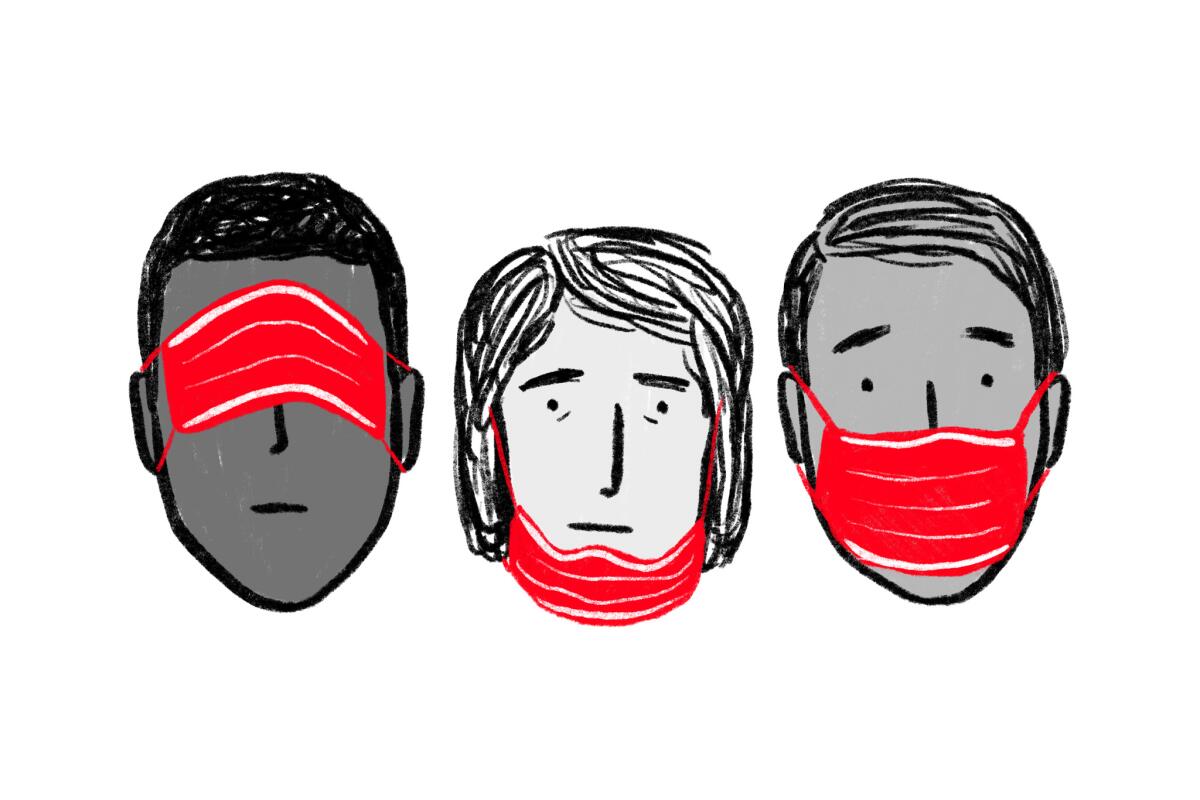
April 2020
— The National Restaurant Assn. estimates that in March 2020 the restaurant industry lost more than 3 million jobs and $25 billion in sales.
— The federal government touts the Paycheck Protection Program as its marquee relief effort, but uneven distribution of funds and an erratic rollout plague the plan from the beginning. Large restaurant chains like Potbelly Sandwich Shop and Legal Sea Foods receive multimillion-dollar loans; many independent restaurants are slow to see any money. On the whole, PPP loans are “the equivalent of a Band-Aid — one of the small ones that goes around your finger,” writes columnist Lucas Kwan Peterson.
— On April 15, Los Angeles County requires residents to wear face coverings outside their homes. The mandate is in step with city requirements and those of many Southern California counties.

— A defining ethos of COVID-era dining culture quickly emerges in Los Angeles: Instagram-based meal ordering and the advent of pop-ups run by chefs and restaurant workers who lost their jobs.
— Even in a pandemic, food obsessives create buzz around some unusually creative and appropriate-to-the-moment innovations by Angeleno chefs. Among them are the bento from n/naka (prepandemic the hardest reservation in Los Angeles) and the dosirak (a Korean lunch box filled, in this case, with two dozen small dishes) from Spoon by H.
— No Us Without You, a nonprofit established by hospitality veterans Damian Diaz and Othón Nolasco, emerges as a vital force for good, distributing more than 100,000 pounds of food weekly to disenfranchised and undocumented workers affected by the crisis.
— Bon Temps in the Arts District and Auburn on Melrose, new and lauded upscale restaurants with ties to hospitality group Sprout L.A., announce on April 29 and April 30, respectively, that they will close.
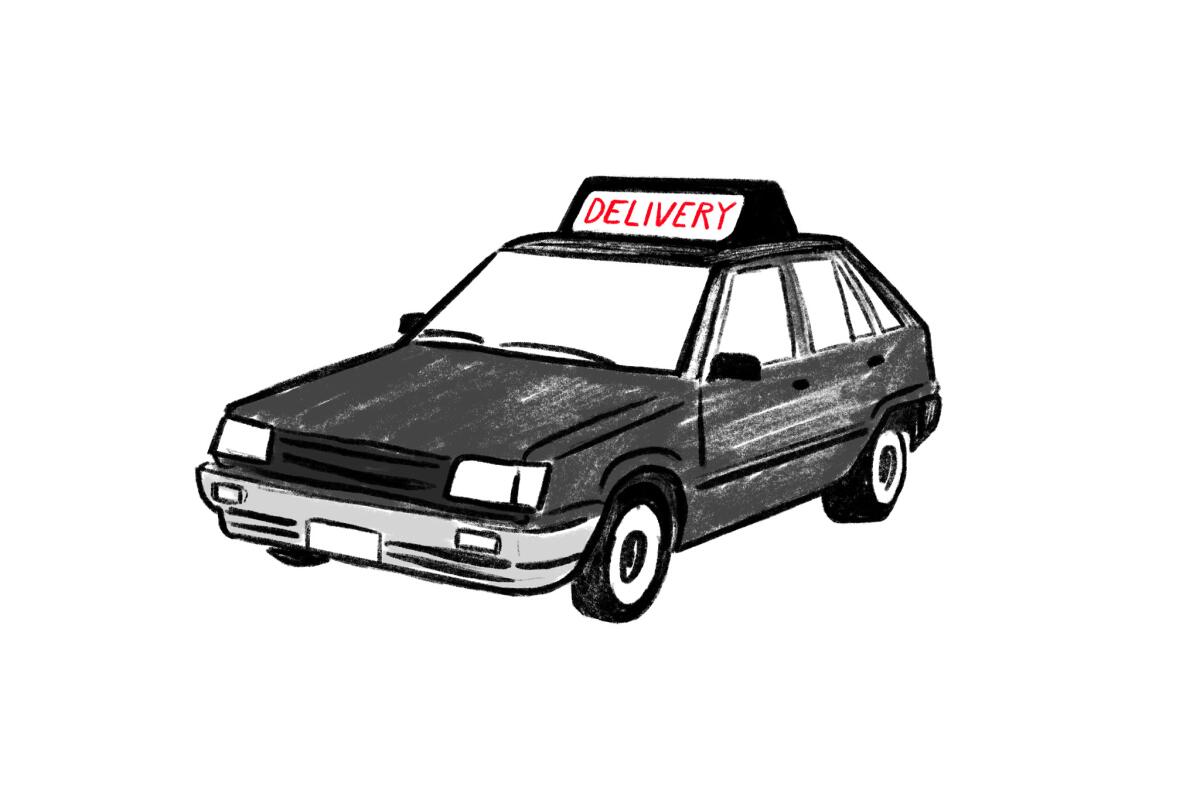
May 2020
— Crippling commissions and fees charged by delivery apps (restaurants pay as much as 30% per order to companies such as Postmates, Grubhub and UberEats) quickly become a hot-button issue. On May 20 the Los Angeles City Council moves to cap delivery fees at 15%, with a 5% maximum limit on additional fees charged by delivery companies.
— Closed dining rooms lead to disruption and chaos in the U.S. food supply chain, affecting farmers, food service providers, grocers and truckers. “The fallout has been particularly severe in California, where more than a thirdof the country’s vegetables and two-thirds of its fruits and nuts are grown — and where hunger andhomelessness were already deeply entrenched,” writes staff writer Kevin Rector.
— Enduring popular soup-and-salad chain Souplantation, founded in San Diego in 1978, closes all locations.
— When can indoor dining resume? Messages from officials at county, city and state levels are disjointed and unclear. In mid-May, thestate releases a detailed plan outlining rules for dine-in restaurants (and related businesses such as brewpubs, bars and wineries). The document outlines the use of face masks by staff, increased fresh air circulation, enhanced sanitary practices, disposable or online menus and spaced, limited-capacity seating.
— Messages from county public health officials earlier in the month hinted that shelter-at-home orders might stretch into the summer. In the interim, L.A. County becomes a hotbed of the COVID-19 outbreak in California, with more than 50,000 confirmed cases and over 2,200 deaths.
— On May 29, restaurants receive an abrupt green light from L.A. County to reopen if/when stringent safety guidelines have been implemented, with indoor dining at 60% capacity. Some chefs and owners balk at the surprise announcement, citing concerns over the well-being of their staffs.
— With the reopening comes the city’s “L.A. Al Fresco” initiative that issues cost-free permits to restaurants that allow them to use sidewalks and private parking lots as dining areas.
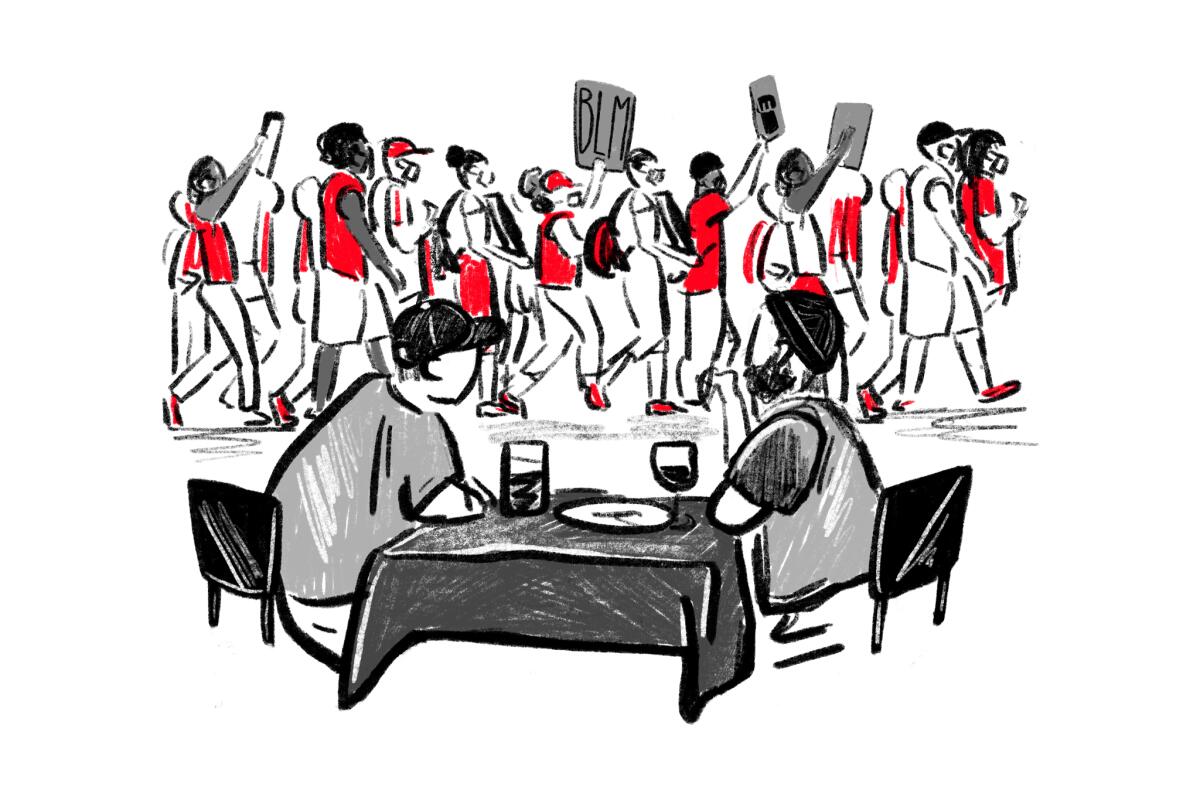
— The same weekend that Los Angeles restaurants are cleared to resume indoor dining, nationwide protests break out sparked by the May 25 death of George Floyd, a 46-year-old Black man who died after a Minneapolis police officer knelt on his neck while he pleaded for air.
— In the following days, as unrest ripples through downtown, the Fairfax district, Santa Monica and other areas, local governments impose nightly curfews; restaurants including Bar Amá and Bäco Mercat, Terroni, Mozza, Petit Trois, Petty Cash and the Santa Monica location of Sunnin suffer damage.
— Dealing with the aftermath of vandalism, chefs and restaurant owners overwhelmingly express messages of support for Black Lives Matter and solidarity in protesting the deaths of Floyd, Ahmaud Arbery and Breonna Taylor. “Our window can be replaced. George Floyd can’t,” chef Ria Dolly Barbosa of downtown’s Petite Peso says on Instagram.
— Around the country, people compile resources to support Black-owned businesses. Kat Hong, a staff writer for the Infatuation website in L.A., compiles a list of 200 Black-owned food businesses that goes viral. “This is a way to put money directly into businesses that are owned by Black people,” she tells Times columnist Jenn Harris.
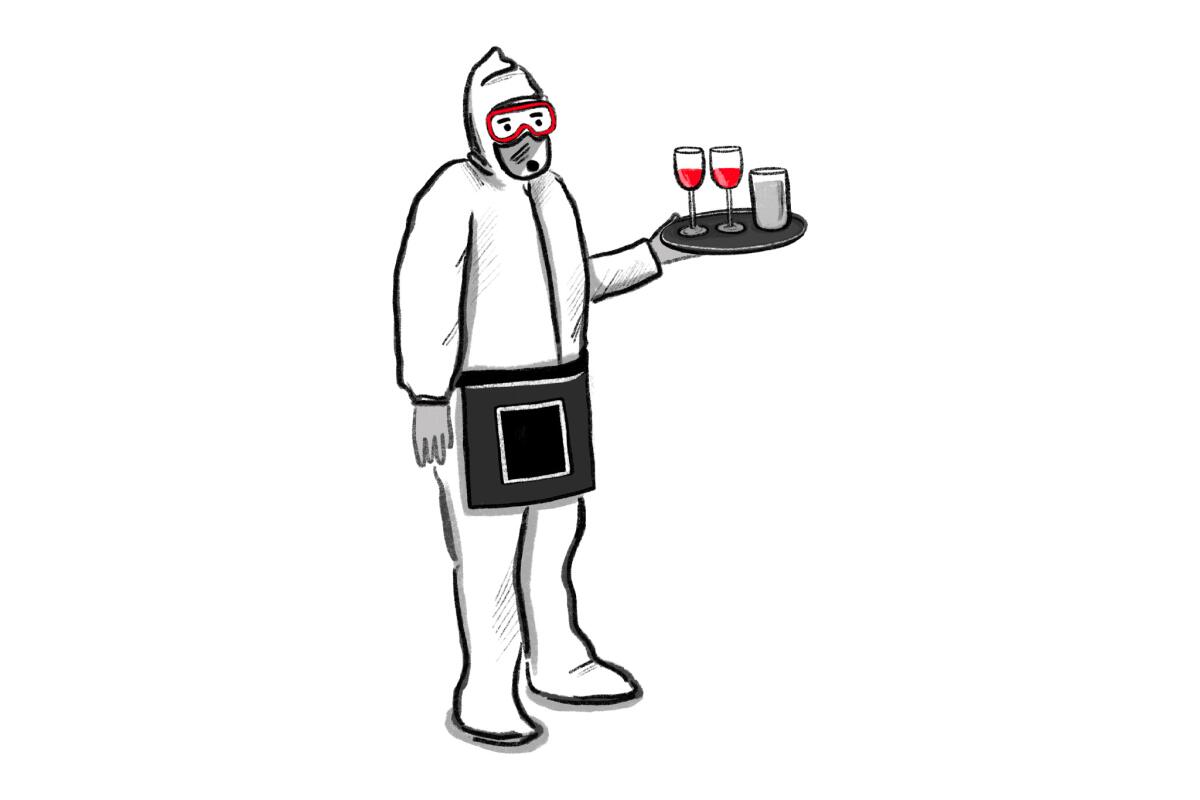
June 2020
— Servers in masks and face shields. Dividers between tables. Empty buffets and salad bars. Streetside Korean barbecue. Elaborate chirashi takeout boxes from sushi bars. No dim sum carts or tableside guacamole. No large groups for banquets or birthdays. Restaurants and their customers attempt to acclimate to a new normal.
— On June 8, Bon Appétit editor-in-chief Adam Rapoport announces he will step down after food and wine writer Tammie Teclemariam resurfaces a photo of him in a Puerto Rican brownface costume. The moment touches off broader, open-ended conversations around entrenched issues of racism, classism and gender inequality in food media.
— COVID-19 cases spike in the weeks after the end-of-May reopening. Studies show that Latino and Black Angelenos experience twice the COVID-19 mortality rate of white residents. “It’s a luxury to shelter in place,” Dr. Kirsten Bibbins-Domingo, chair of UC San Francisco’s Department of Epidemiology and Biostatistics, tells Times staff writer Rong-Gong Lin II in an interview.
— The federal Restaurants Act (or HR 7197), a bipartisan proposal created in partnership with the Independent Restaurant Coalition formed at the pandemic’s inception, is introduced in Congress. The bill seeks a $120-billion revitalization fund for small and independent restaurants.
— Despite rising cases, bars, wineries, breweries and tasting rooms receive the go-ahead to reopen on June 19.
— Din Tai Fung, the Taiwan-based chain known for its soup dumplings, closes its original local location in Arcadia.
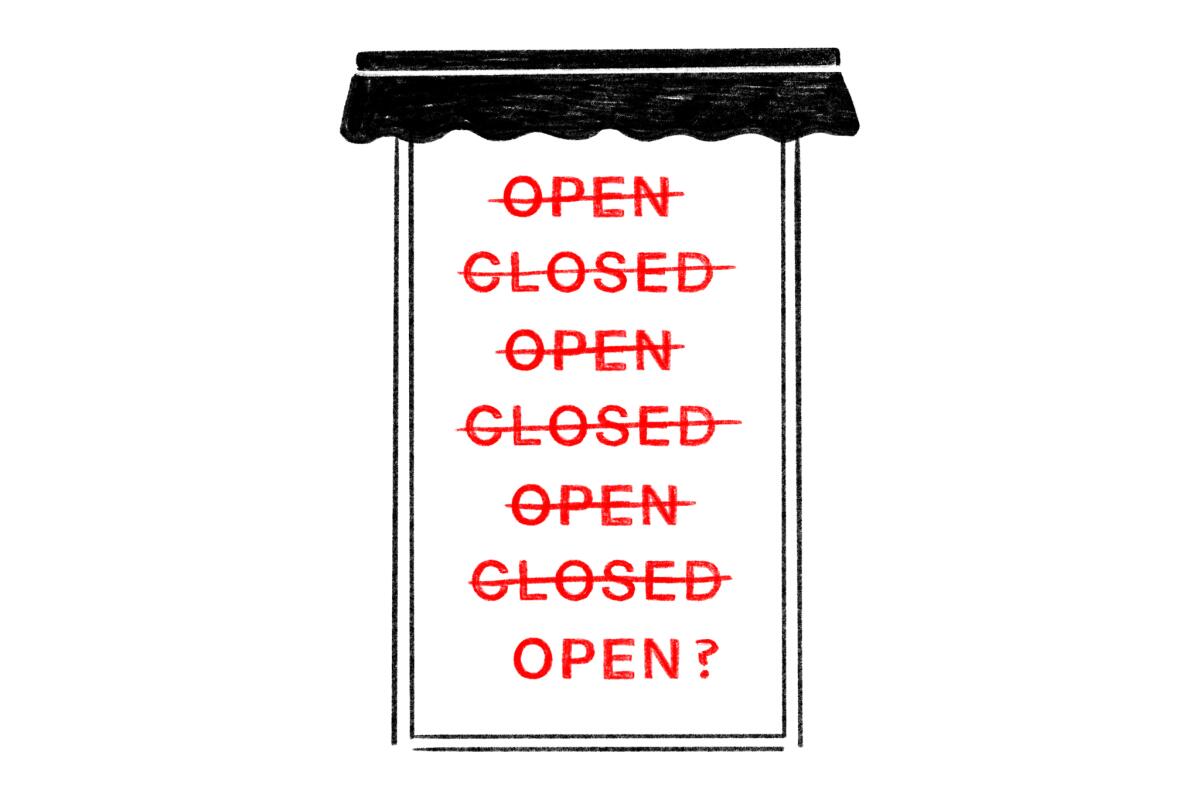
July 2020
— Less than two weeks after Los Angeles County records its most new COVID-19 cases —more than 6,600 — in a single day since the pandemic hit the U.S., Newsom orders seven counties, including Los Angeles, to close bars, breweries and pubs that sell alcoholic drinks without also serving food.
— The same day, the state directs restaurants in 19 counties, Los Angeles included, to cease indoor dining. Restaurants can still serve customers in outdoor spaces or on open-air patios.
— L.A. County officials pass a motion giving health inspectors the power to impose fines or revoke permits for businesses not obeying COVID-19 safety measures. “Inspectors found that from June 27 to 28, 49% of bars and 33% of restaurants were not adhering to physical distancing protocols indoors, while 54% of bars and 44% of restaurants were not enforcing face mask and face shield requirements,” writes The Times’ Garrett Snyder.
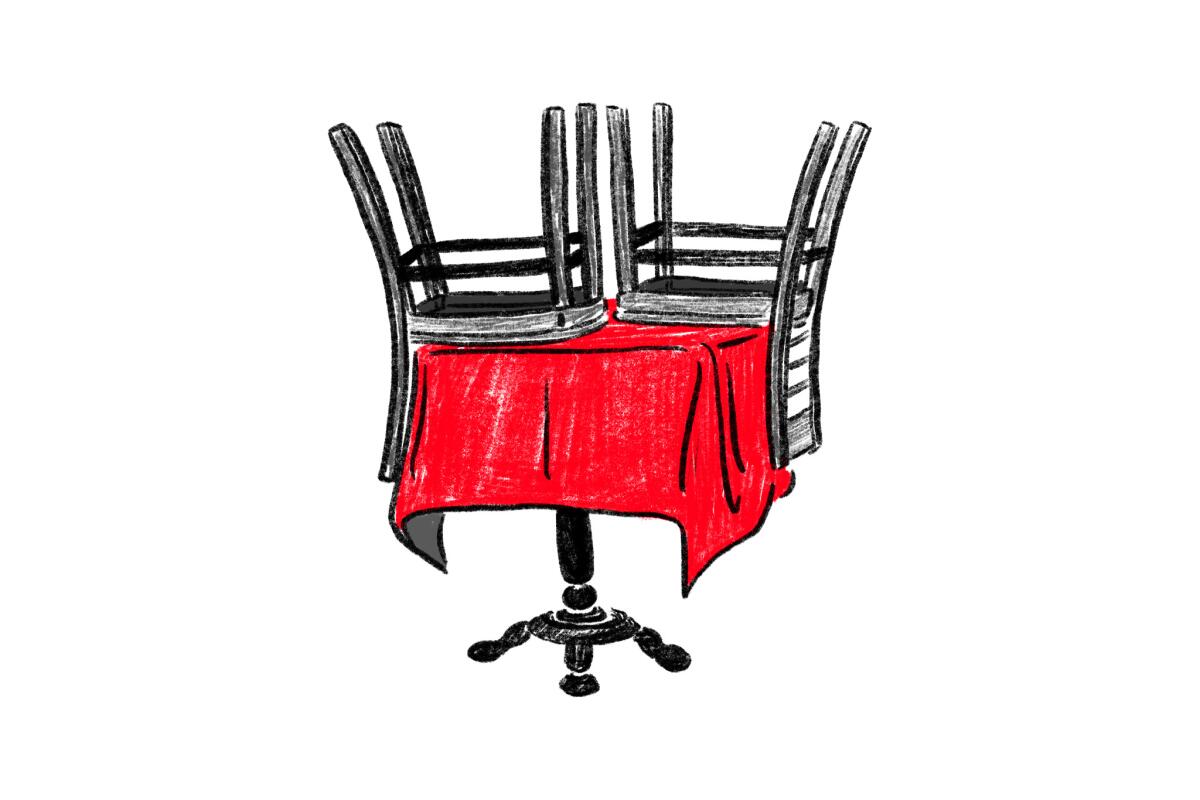
August 2020
— L.A. County extends the L.A. Al Fresco program through the end of the year.
— July and August bring a spate of closings that include restaurants from five of the last decade’s biggest chefs: Ludo Lefebvre’s Trois Mec, Josef Centeno’s Bäco Mercat, Charles Olalia’s Ma’am Sir, Ray Garcia’s Broken Spanish and José Andrés’ Bazaar and Somni.
— Koreatown loses two classics, Dong Il Jang and Jun Won, as well as the Jonathan Whitener and Lien Ta ultra-creative draw Here’s Looking at You.
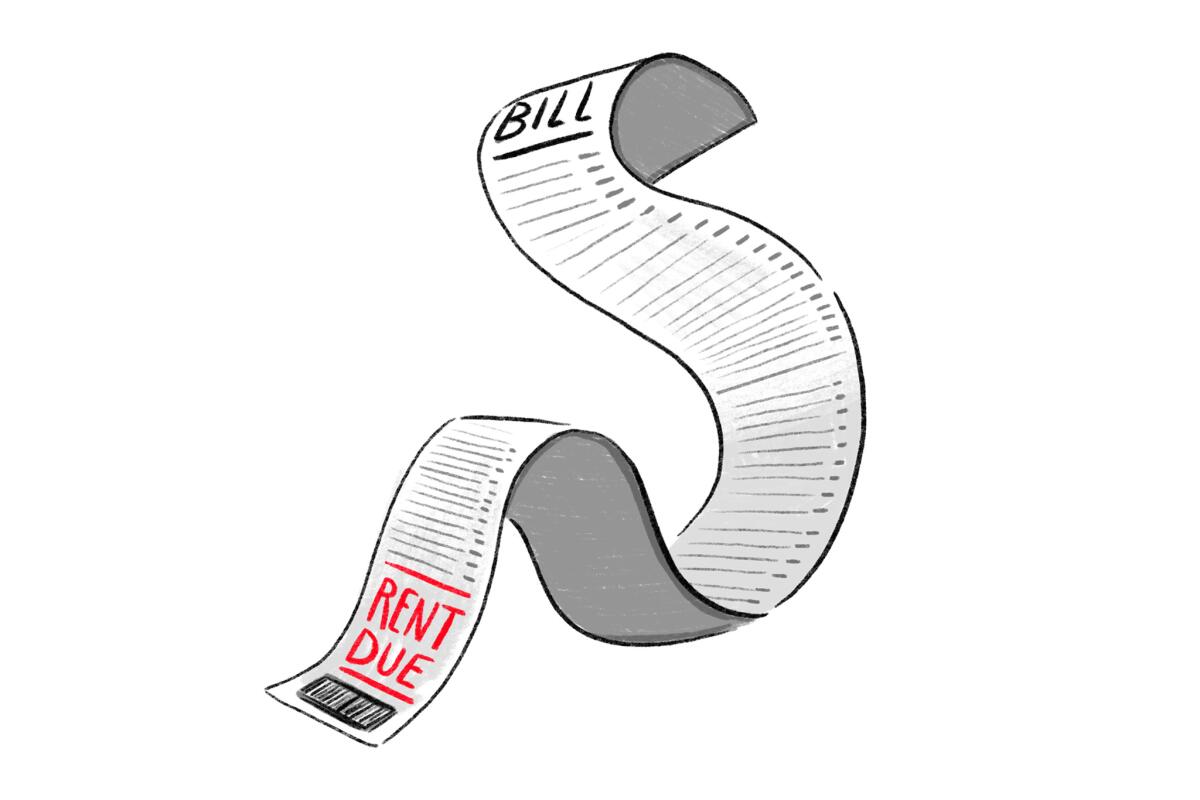
September 2020
— The 24-hour steakhouse Pacific Dining Car, founded in 1921, announces its closing and auctions off equipment from both its locations.
— Beverly Soon Tofu, a pioneering Koreatown institution opened by Monica Lee in 1986, closes on Sept. 20.
— Gov. Newsom allows indoor dining to resume in Orange County at 25% capacity. Indoor dining in Los Angeles remains off-limits.
— The lingering crisis brings to the surface urgent plights (What happens when a restaurant can’t pay the rent?) and intensifies big-picture quandaries challenging the traditional military-like brigade systems in kitchens and the need for wage equity; recipe ownership and culinary appropriation; and the slim-margin existence most restaurants face. “The real equalizer would be if people would pay more money for food so we could pay people equally,” Portland, Ore., chef Naomi Pomeroy tells Lucas Kwan Peterson.
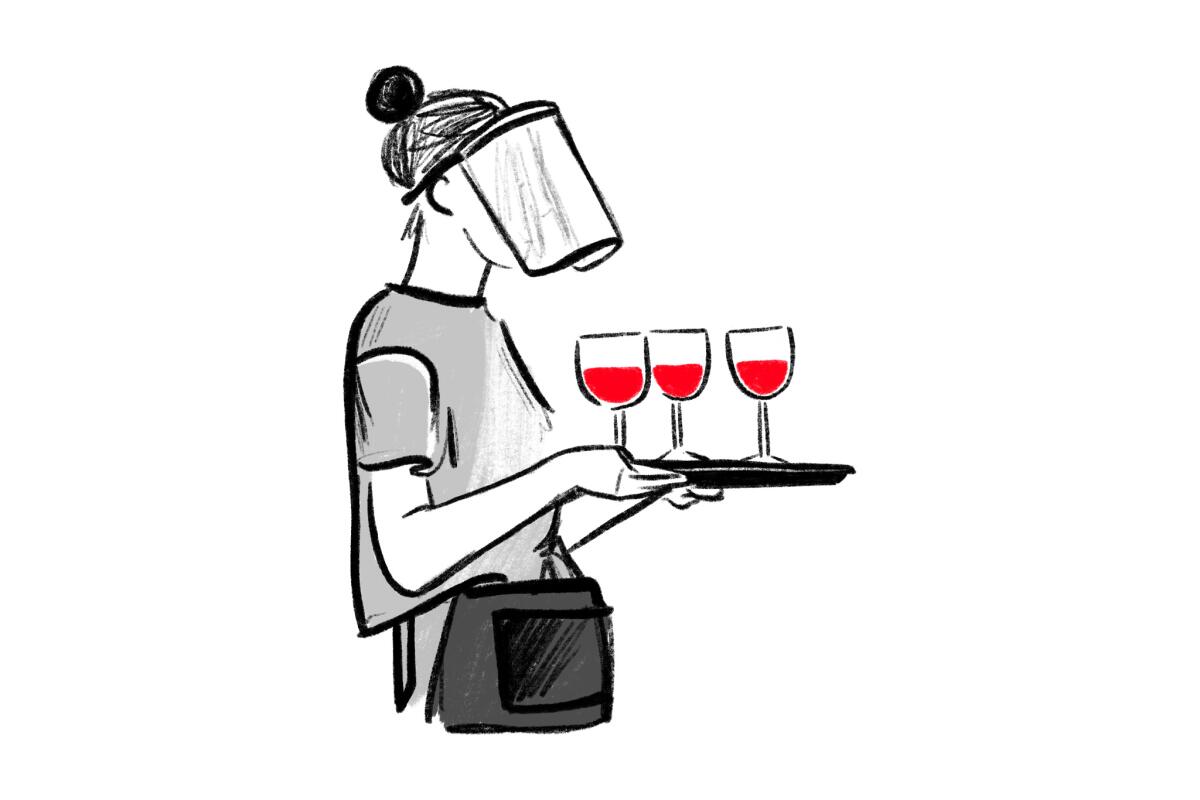
October 2020
— Despite extraordinary obstacles, a handful of new standout restaurants spring to life in Southern California during the pandemic. Wes Avila, the creator of Guerrilla Tacos, opens Angry Egret Dinette, a takeout operation riffing on sandwiches and street foods, in late October. Earlier noteworthy openings include pitmaster Daniel Castillo’s Heritage Barbecue in San Juan Capistrano, tiny Filipino dynamo Petite Peso downtown, Tamales Elena y Antojitos in Bell Gardens and upscale Mírame in Beverly Hills.
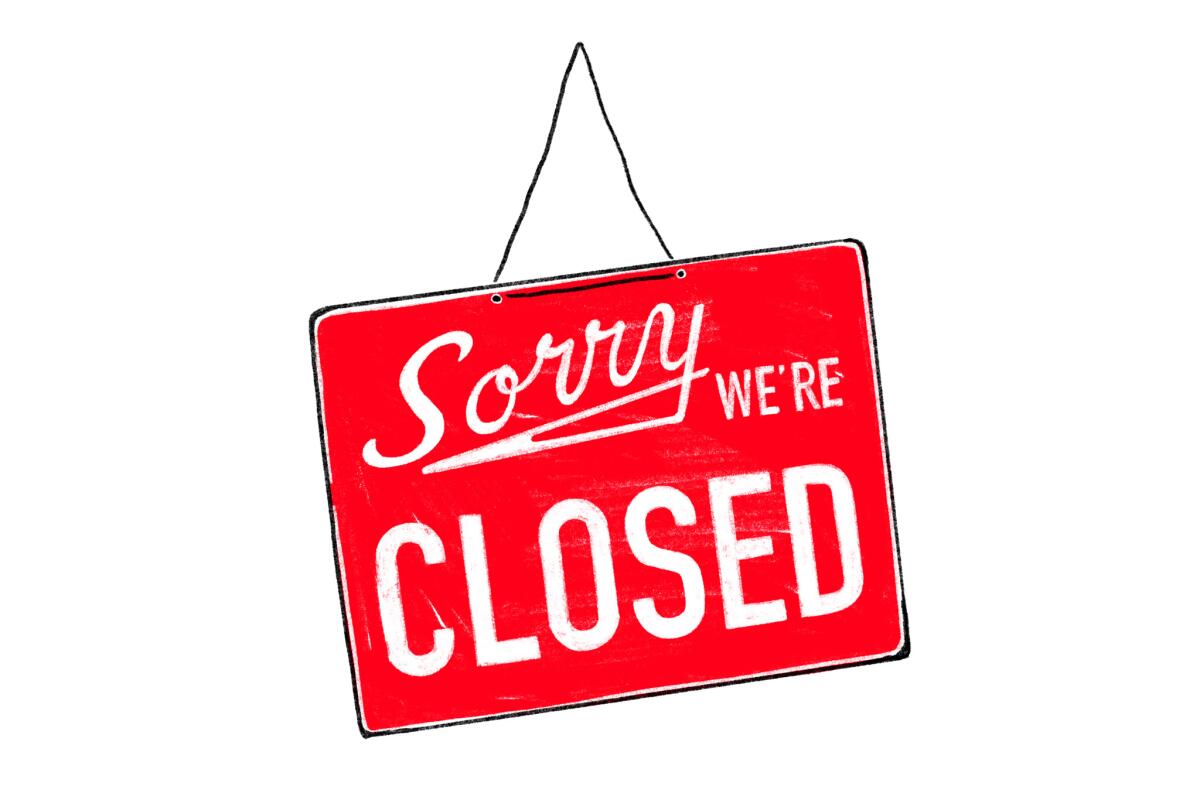
November 2020
— California becomes the second state after Texas to pass 1 million cases of COVID-19 since the beginning of the pandemic.
— Dave Beran closes his tiny Santa Monica innovator Dialogue.
— Gov. Newsom admits he should not haveattended a dinner with other households at the French Laundry restaurant in Napa Valley’s Yountville on Nov. 6 while coronavirus cases mounted statewide.
— As the alarming surge in COVID-19 cases persists, L.A. County public health officials suspend outdoor dining at restaurants as of Wednesday, Nov. 25. The halt on outdoor dining is initially set to be three weeks.
— Devastated by facing another round of employee layoffs, particularly after investing often thousands of dollars into outdoor dining protocols, many restaurant owners fear they won’t make it through the November shutdown. “It’s an impossible game that doesn’t make any sense, and it seems like nobody cares about us,” Casa Vega owner Christy Vega Fowler tells The Times.
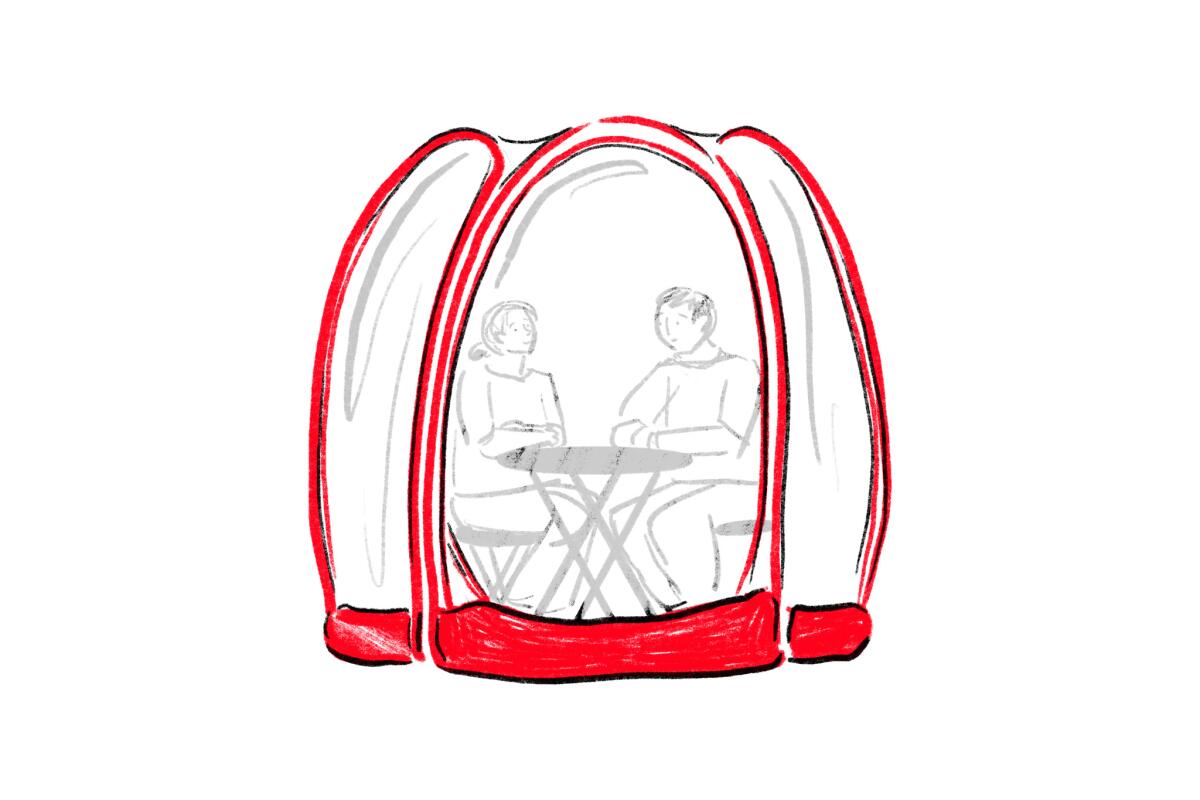
December 2020
— Another stay-at-home order goes into effect in Southern California on Dec. 6 as hospital intensive care units fill with COVID-19 patients; the shutdown will last through the winter holidays.
— Angela Marsden, owner of Pineapple Hill Saloon & Grill in Sherman Oaks, posts a video on social media that goes viral: She films her restaurant’s closed patio adjacent to tents and tables set up as a catering station for a film crew. “I’m losing everything,” Marsden says in the video, expressing the frustration of many in the food industry. “Tell me that this is dangerous, but right next to me — as a slap in my face — that’s safe?”
— Exhausted from a year of “pivoting” and angry about the meager and uneven level of government support throughout the crisis, restaurant professionals stage protests around the region. Some restaurants openly defy the ban on outdoor dining, courting fines and closures from county officials.
— Healthcare workers receive the first COVID-19 vaccinations in California on Dec. 14.
— A survey conducted by the National Restaurant Association concludes that by year’s end, 110,000 restaurants across the U.S. had closed due to the pandemic’s devastating effects. Dozens of places across the L.A. Metro area — neighborhood staples, modernist temples, indie survivors that reflected the diverse character of their communities — permanently shut their doors.
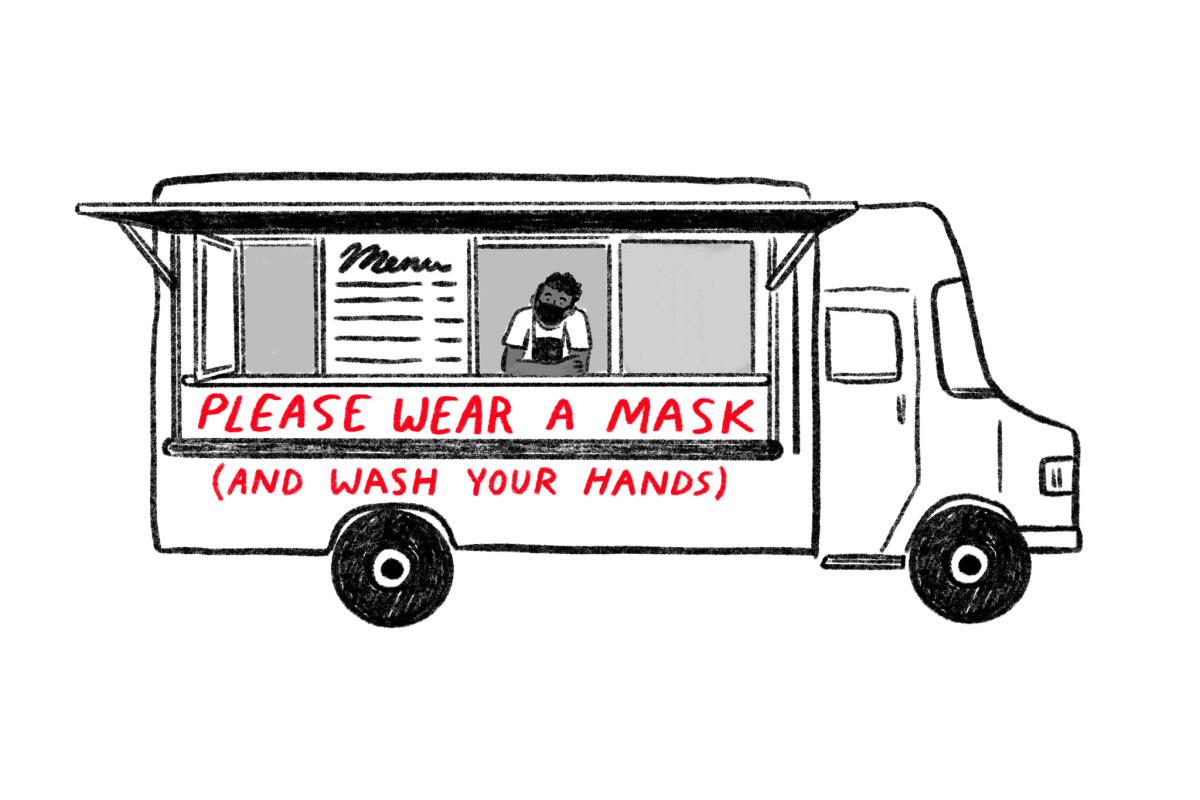
January 2021
— As of Jan. 12, the L.A. County Department of Public Health states thatone in every five people being tested for the coronavirus registers as positive. Jenn Harris reports on the decisions restaurant owners face when they learn an employee tests positive for COVID-19, with many of them frustrated by a jumble of guidelines from various government agencies. “If there was more aid or assistance we wouldn’t have to decide between health and business,” says Yang’s Kitchen chef-owner Christian Yang of his experience last summer (and the industry’s general state of emergency).
— The UC San Francisco Department of Epidemiology and Biostatistics produces a study, based on data from March to October 2020, evaluating the highest-risk jobs during the pandemic. “Cooks” face the most danger, according to the study — more than agricultural workers, construction laborers and customer service representatives.
— California passes3 million confirmed COVID-19 cases.
— As L.A. emerges from a deadly swell of coronavirus infections that county Public Health Director Barbara Ferrer called “the worst disaster our county has experienced for decades,” Gov. Newsom lifts stay-at-home orders across the state as of Jan. 25.
— Following the state’s lead, on Jan. 29 L.A. County allows outdoor dining to resume for the first time since Thanksgiving. To discourage gatherings at establishments to watch the Super Bowl and other sports events, guidelines dictate that “televisions or other screens that broadcast programming must remain off until further notice.”
— Reopenings return amid growing concerns around new, potentially more contagious coronavirus variants.
— In late January the city of Long Beach, which has its own health department and vaccine supply, begins prioritizing food workers for vaccinations.
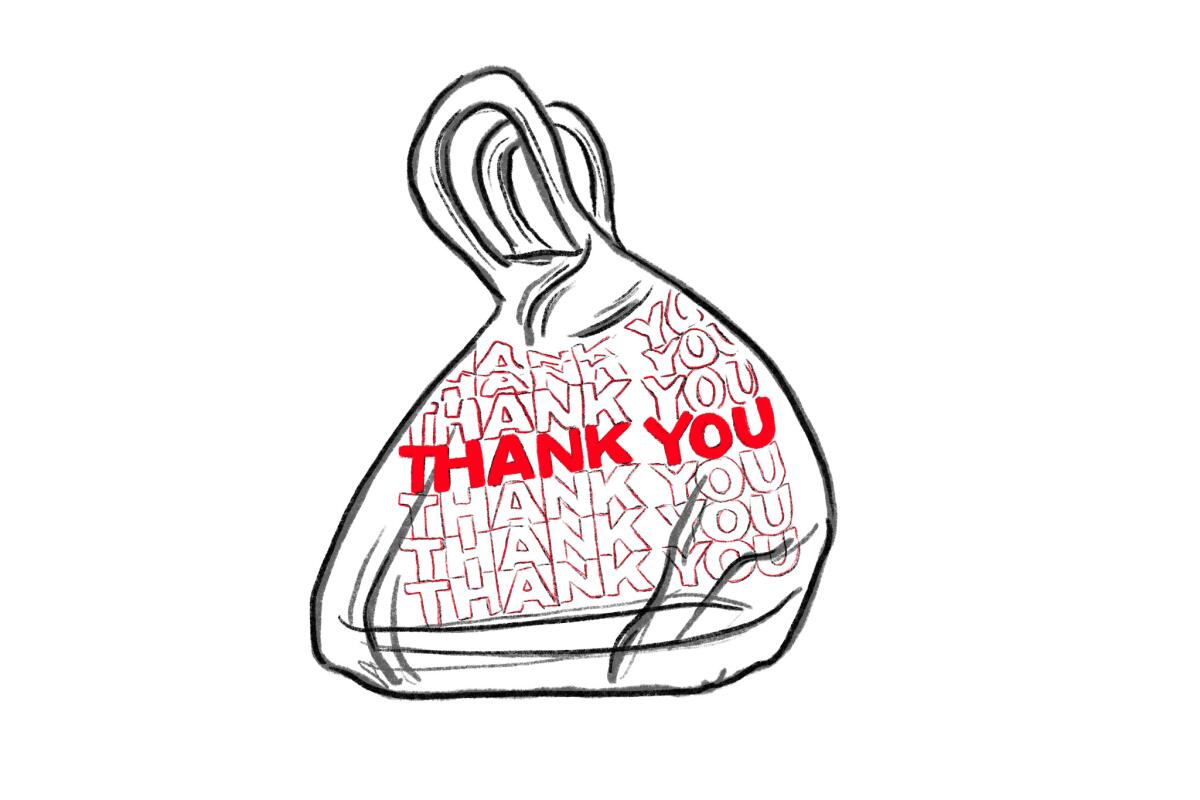
February 2021
— Amid the financial and emotional roller coaster of closings and reopenings, a question looms: Did the ban on outdoor dining help slow the spread of the virus? Scientists interviewed by Times reporters Soumya Karlamangla and Rong-Gong Lin II say yes (though data can take years to process). L.A. County Supervisor Kathryn Barger says in an interview that November’s contentious ban on outdoor dining ban “made people lose faith in the rules.”
— Los Angeles becomes the largest city in the nation to back a proposal requiring grocery stores to temporarily pay workers an extra $5 an hour. The raises, called “hero pay,” are an urgent issue in progressive cities in California and beyond, with backers saying grocery workers have put their health at risk to serve customers as COVID-19 has spread.
— Jenn Harris reports on a new form of dine-and-dash that has surfaced during the pandemic: “Some people are scamming restaurateurs with fraudulent credit cards, while others request refunds, claiming they never received part or all of an order.” Beloved restaurant Spoon by H proves a particular target for this behavior. For owner Yoonjin Hwang it is a tipping point: On Feb. 22, she announces she is closing the restaurant.
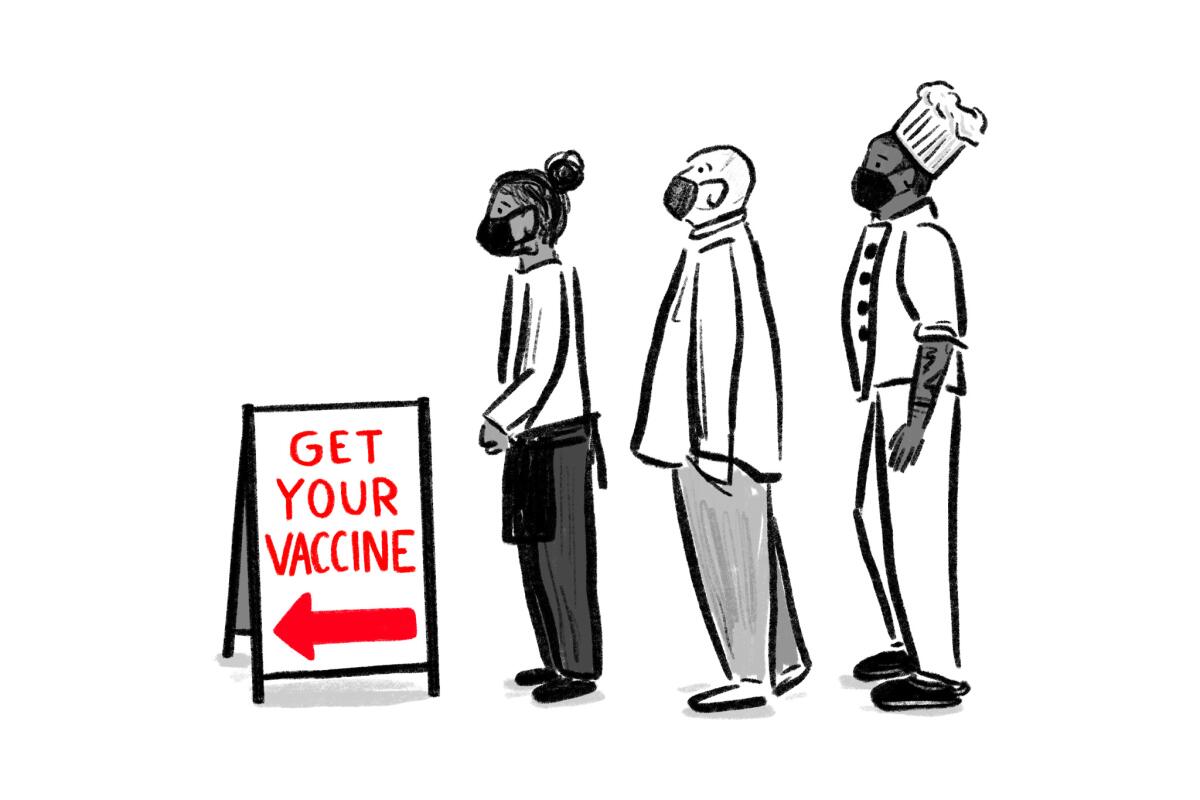
March 2021
— As of March 1, L.A. County includes food workers in groups prioritized for COVID-19 vaccines.
— An Eater L.A. piece notes that while street vendors are included in the current vaccination tier, proof of eligibility can be difficult for these workers, many of whom are undocumented.
— With new COVID-19 cases plunging and the number of vaccinated Angenelos rising, L.A. County officials give the go-ahead for indoor dining to resume on March 15 with 25% capacity (with a maximum of 100 occupants). The news comes in line with the state meeting its goal to administer 2 million vaccine doses to residents in its most disadvantaged areas.
— Some restaurateurs, not in a rush to reopen their dining rooms (health officials remind the public that eating inside restaurants remains a risky activity), hope that city permits and landlord permissions will lead to more permanent outdoor dining spaces.
— Nearly a year after the first pandemic-related shutdowns, chefs and restaurant owners express cautious optimism in the passing of President Biden’s American Rescue Plan Act of 2021, a $1.9-trillion stimulus package that includes a $28.6-billion relief fund designated specifically to help independent neighborhood restaurants, bars, food trucks and street vendors.
More to Read
Eat your way across L.A.
Get our weekly Tasting Notes newsletter for reviews, news and more.
You may occasionally receive promotional content from the Los Angeles Times.


